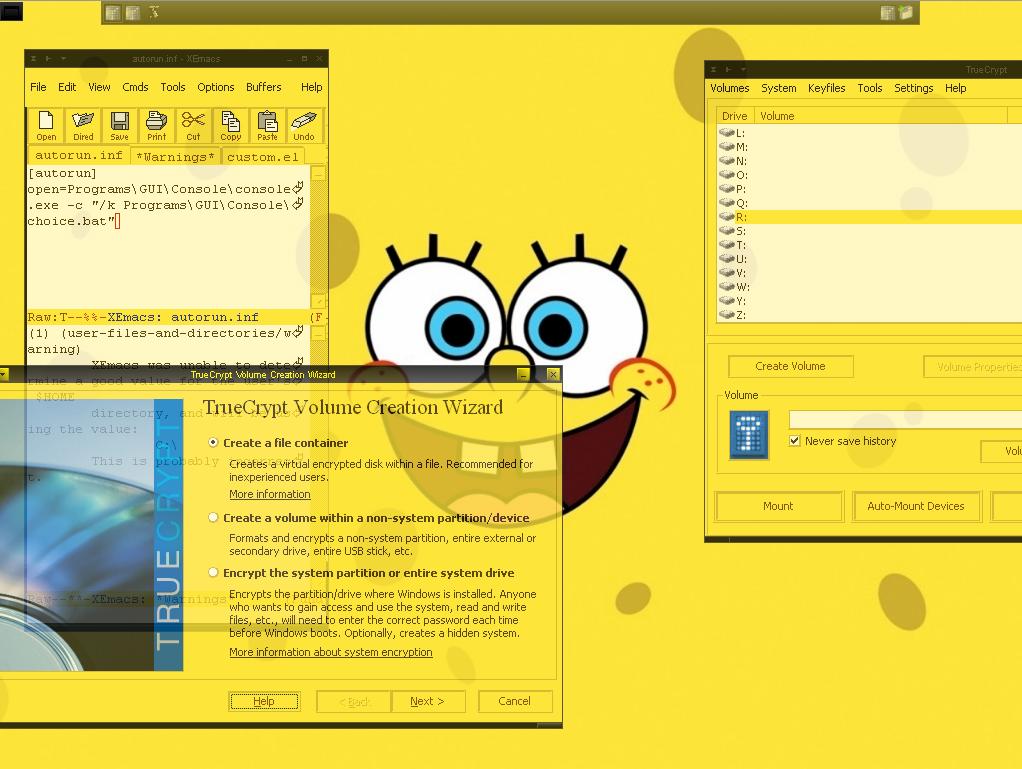

Lastly, open a Command Line window, navigate to the BartPE utility suite's folder (using the CD command) & execute the followung: Then, press the Start button to format the disk. Plug the USB disk into the computer, run the program & make sure that only the Enable Disk Format check box has been checked (do not check any other check boxes & do not select any other radio buttons aside from the USB Fixed or USB Removable radio buttons those exist to select the type of USB disk to format).
Bartpe iso sourceforge install#
This utility has the ability to properly format a USB disk & install a Windows XP boot sector.
Bartpe iso sourceforge download#
Next, download a utility called PEToUSB (available here or in the Downloads page). Once the above has been completed, the file named "ramdisk.sy_" can be deleted. Then, open a Command Line window, navigate to said folder & execute the following: look for two files one named "setupldr.bin" & another named "ramdisk.sy_." Copy both files into the "srsp1" folder of the BartPE utility suite's directory.

Thirdly, navigate to the folder where the installation file was extracted to. Choose any folder to extract the installation file into & press the OK button. This allows for the installation file to be extracted as though it were made by a file archiving utility. Then, open a Command Line window, navigate to the aforementioned folder (using the CD command) & execute the following:Ĭ:\>WindowsServer2003-KB889101-SP1-x86-ENU -x Secondly, download Microsoft's Windows Server 2003 SP1 installation file (this can be found here, as a 329 MB installation file). Then, create a folder in the BartPE utility suite's folder name it as "srsp1."

Then, proceed with preparing the desired utilities as per the BartPE tutorial on this website (creating an ISO disk image isn't necessary). The technique will also malfunction if the drive has been formatted in any disk format other than FAT16 (also known as FAT).įirstly, download the BartPE system files here or in the Downloads page. If a USB drive has a capacity greater than 2 GB, this technique will NOT work. This is because two files from the package are required for this to work properly. That said, another utility is required Microsoft's Windows Server 2003 SP1 standalone installer. This is because the drive has to be formatted as a FAT16 disk with a Windows NT boot sector (which is impossible without a special program). Bart's technique of creating bootable USB drives requires the use of a USB disk that has no more than 2 GB of space. However, there are a handful of limitations. And with the advent of netbook computers (laptop computers that carry no optical drive whatsoever,) this technique became invaluable.
Bartpe iso sourceforge software#
The implications of this software trick was (& still is) hailed by software enthusiasts as well as IT support technicians Bart's technique allowed for technicians to boot into BartPE much faster, without the need to burn a CD. In other words, the USB drive was programmed to copy the ISO file into the computer's RAM & emulate it as a virtual CD drive). The USB drive he experimented with was able to boot up the computer, but instead of going straight into the BartPE OS, it loaded the BartPE ISO file into the computer's RAM & tricked the system into loading the file as an actual CD! Bart Lagerweij is a brilliant programmer not only did he create the BartPE system of creating bootable CDs, but he also found a way of installing the resulting ISO file onto a USB drive & making it bootable.


 0 kommentar(er)
0 kommentar(er)
